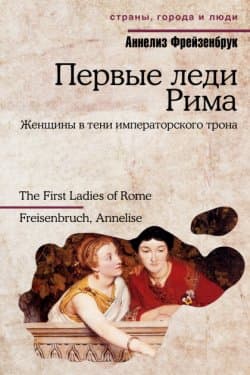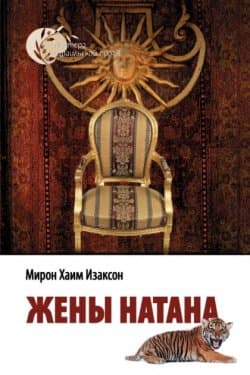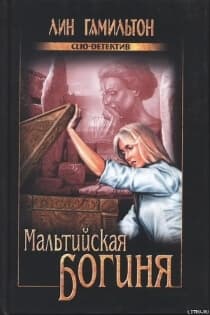Первые леди Рима - Фрейзенбрук Аннелиз
-
Название:Первые леди Рима
-
Автор:
-
Жанр:
-
Язык:Русский
-
Издательство:АСТ
-
Страниц:221
-
Рейтинг:
-
Ваша оценка:
Собственно что ведомо нам о том, кем прежде была данная дама, в случае если осуждать по этому белесому слепку? Ибо данный слепок – все, чем мы располагаем…»
Первые леди Рима - Фрейзенбрук Аннелиз читать онлайн бесплатно полную версию книги
Swain, S., Harrison, S. J. and Eisner, J. (eds.) (2007) Severan Culture. Cambridge.
Syme, R. (1984) «The Crisis of 2 BC», in A. Birley (ed.), Roman Papers, Vol. 3. Oxford.
Takács, S. A. (2008) Vestal Virgins, Sibyls and Matrons: Women in Roman Religion. Austin, TX.
Tamm, B. (1963) Auditorium and Palatium: A Study on Assembly- Rooms in Roman Palaces During the First Century BC and the First Century AD. Stockholm.
Tomei, M. A. (1998) The Palatine, trans. L. Guarneri Hynd. Milan.
Tougher, S. (1998) «In Praise of an Empress: Julian’s Speech of Thanks to Eusebia», in M. Whitby (ed.), The Propaganda of Power: The Role of Panegyric in Late Antiquity. Boston, MA.
Treggiari, S. (1973) «Domestic Staff in the Julio-Claudian Period», Histoire Sociale 6:241-55.
Treggiari, S. (1975) Jobs in the Household of Livia’, Papers of the British School at Rome 43:48–77.
Treggiari, S. (1991) Roman Marriage: Iusti Coniuges from the Time of Cicero to the Time of Ulpian. Oxford.
Treggiari, S. (2007) Terentia, Tullia, and Publilia: The Women of Cicero’s Family. London. Van Bremen, R. (1983) «Women and Wealth», in A. Cameron and A. Kuhrt (eds.), Images of Women in Antiquity. London.
Treggiari, S. (1996) The Limits of Participation: Women and Civic Life in the Greek East in the Hellenistic and Roman Periods. Amsterdam.
Van den Hout, M. P. J. (1999) A Commentary on the Letters of M. Cornelius Fronto. Leiden.
Varner, E. R. (1995) «Domitia Longina and the Politics of Portraiture», American Journal of Archaeology 99.2:187–206.
Varner, E. R. (ed.) (2001a) From Caligula to Constantine: Tyranny and Transformation in Roman Portraiture. Atlanta, GA.
Varner, E. R. (2001b) «Portraits, Plots and Politics: Damnatio Memoriae and the Images of Imperial Women», Memoirs of the American Academy in Rome 46:41–93.
Varner, E. R. (2004) Mutilation and Transformation: Damnatio Memoriae and Roman Imperial Portraiture. Leiden.
Vinson, M. (1989) «Domitia Longina, Julia Titi and the Literary Tradition», Historia 38:431-50.
Von Blanckenhagen, P. H. and Alexander, C. (1962) The Augustan Villa at Boscotrecase. Mainz.
Vout, C. (2007) Power and Eroticism in Imperial Rome. Cambridge.
Vout, C. (2009) «Representing the Emperor», in Feldherr (ed.).
Walker, S. and Higgs, P. (eds.) (2001) Cleopatra of Egypt: From History to Myth. London.
Wallace-Hadrill, A. (1988) «The Social Structure of the Roman House», Papers of the British School at Rome 56:43–98.
Wallace-Hadrill, A. (1993) Augustan Rome. London.
Wallace-Hadrill, A. (1994) Houses and Society in Pompeii and Herculaneum. Princeton, NJ.
Wallace-Hadrill, A. (1996) «The Imperial Court», in Bowman, Champlin and Lintott (eds.).
Walter, C. (2006) The Iconography of Constantine the Great: Emperor and Saint. Leiden.
Walton, C. L. (ed.) (1965) Berenice. London.
Whitmarsh, T. (2007) «Prose Literature and the Severan Dynasty», in Swain, Harrison and Eisner (eds.).
Winkes, R. (2000) «Livia: Portrait and Propaganda», in Kleiner and Matheson (eds.)
Winterer, C. (2007) The Mirror of Antiquity: American Women and the Classical Tradition 1750–1900. Ithaca, NY and London.
Wood, S. (1988) «Agrippina the Elder in Julio-Claudian Art and Propaganda», American Journal of Archaeology 92:409-26.
Wood, S. (1992) «Messalina, wife of Claudius: Propaganda Successes and Failures of his Reign», Journal of Roman Archaeology 5:219-34.
Wood, S. (1999) Imperial Women: A Study in Public Images, 40BC — AD68. Leiden.
Woods, D. (1998) «On the Death of the Empress Fausta», Greece and Rome 45.1: 70–86.
Wyke, M. (1994) «Woman in the Mirror: The Rhetoric of Adornment in the Roman World», in Archer, Fischler and Wyke (eds.).
Wyke, M. (ed.) (1998) Parchments of Gender: Deciphering the Body in Antiquity. Oxford.

 Мифы Греции и Рима
Мифы Греции и Рима  Жены Натана
Жены Натана  Убийца Шута
Убийца Шута  Диковинные друзья
Диковинные друзья  Ты, как снег на голову
Ты, как снег на голову  Наследницы
Наследницы  Наследник
Наследник  Пир теней
Пир теней  Князь во все времена
Князь во все времена  Когда порвется нить
Когда порвется нить 




